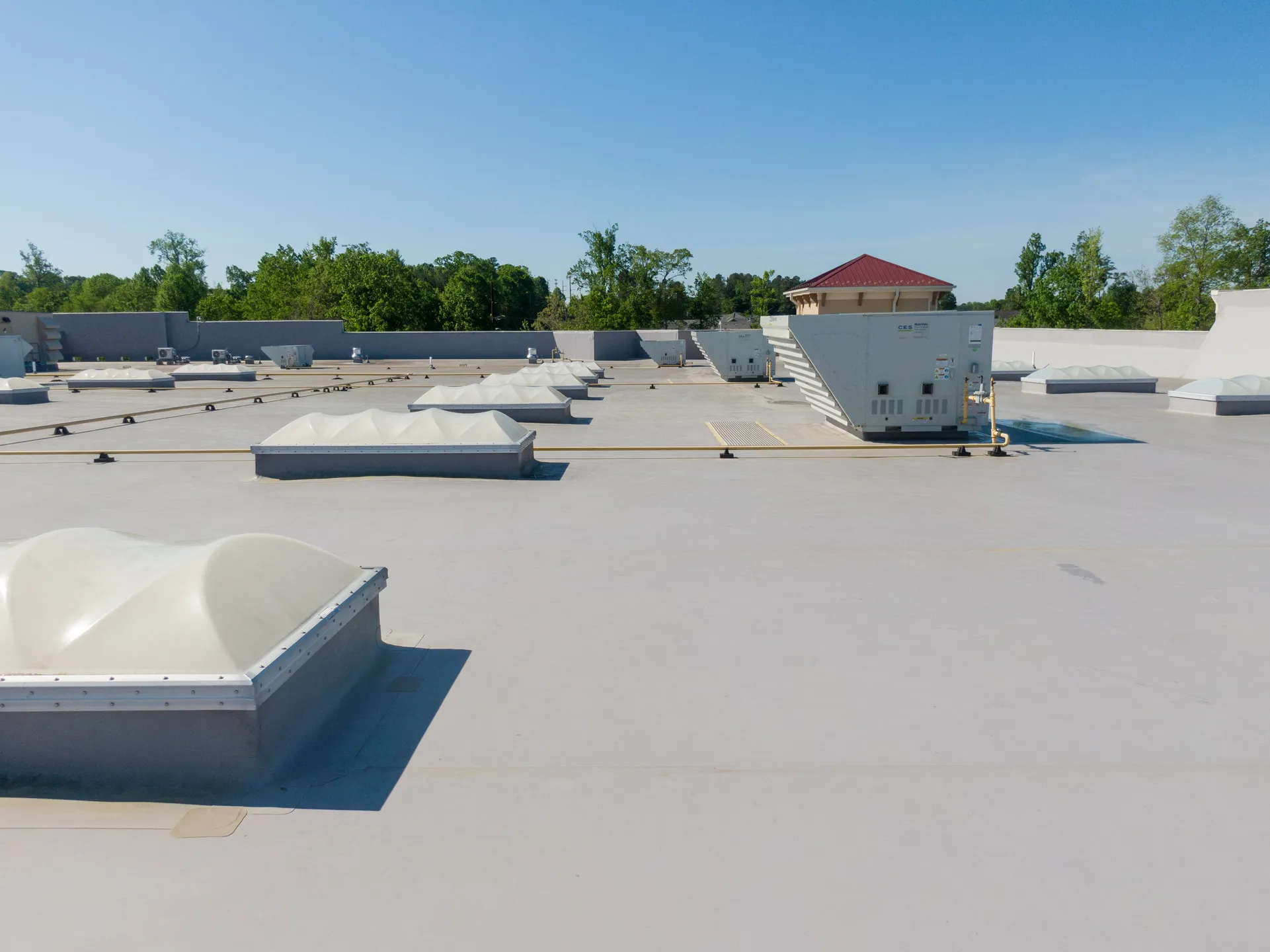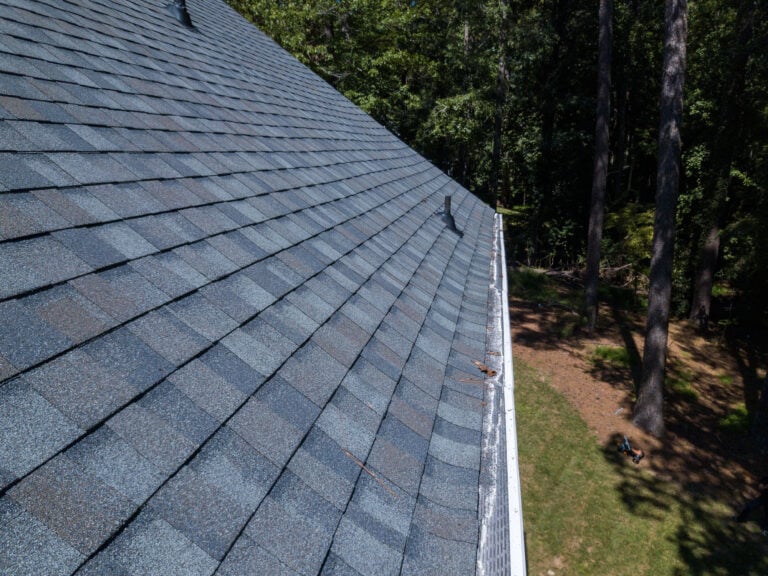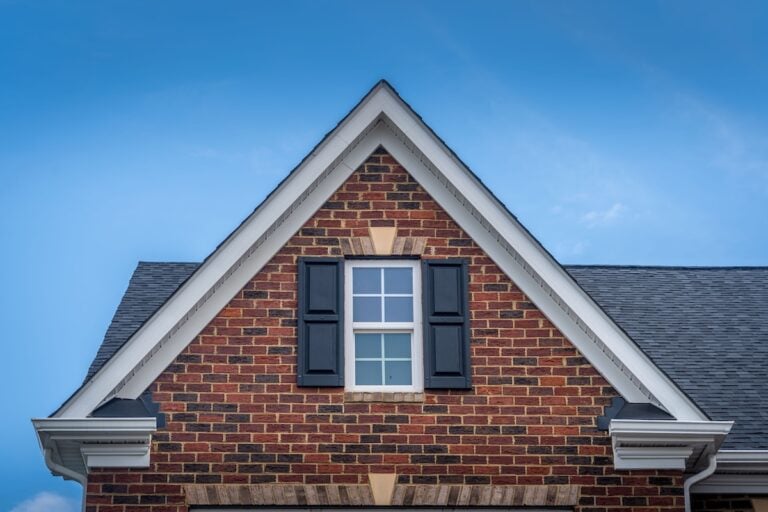Thermoplastic Olefin (TPO) roofing has become increasingly popular in the commercial sector as well as modern residential properties due to its durability, energy efficiency, and cost-effectiveness.
If you’re a commercial property owner considering TPO roofing materials, understanding the associated costs is essential for making an informed decision. Hiring a professional roofing contractor is crucial for ensuring proper installation and the long-term performance of your TPO roofing system.
We’re here to break down:
- The various factors that influence TPO roofing cost
- Provide cost estimates
- Discuss the benefits and potential drawbacks
What is TPO Roofing?

TPO roofing is a single-ply roofing membrane made from a blend of polypropylene and ethylene-propylene rubber. Known for its white reflective surface, the TPO roofing system helps reduce energy costs by reflecting UV rays and heat. It’s commonly used in flat or low-slope commercial roofs and offers excellent resistance to tears, punctures, and chemical exposure.
🔑 Key Features of TPO Roofing:
- Seam Strength: The seams of TPO roofs are heat-welded, creating a strong and durable bond.
- Energy Efficiency: The reflective surface reduces cooling costs by reflecting sunlight.
- Durability: TPO membranes are resistant to mold, dirt, and punctures.
- Flexibility: Suitable for various weather conditions and flexible in cold temperatures.
Comparison with Other Roofing Materials (EPDM, PVC)
When it comes to choosing the right roofing material for your building, it’s essential to consider the pros and cons of each option. TPO roofing is often compared to EPDM (ethylene propylene diene monomer) and PVC (polyvinyl chloride) roofing materials. Here’s a brief comparison:
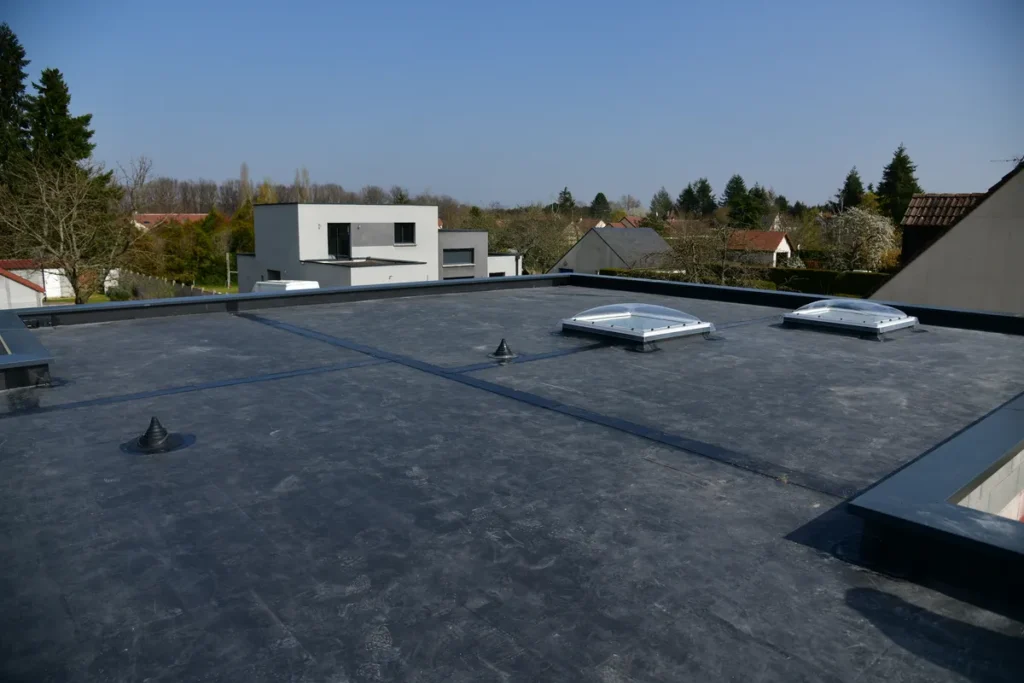
- EPDM Roofing: EPDM is a popular choice for flat roofs due to its affordability and ease of installation. However, it has a lower UV resistance rating compared to TPO roofing. EPDM is also more prone to punctures and typically has a shorter lifespan, ranging from 10 to 15 years, whereas TPO roofs can last between 15 to 20 years.
- PVC Roofing: PVC is a more expensive option compared to TPO, but it offers superior durability and resistance to chemicals and punctures. PVC roofing can last up to 25 years or more, making it a long-term investment. However, it’s also more prone to shrinkage and brittleness over time, which can lead to maintenance issues.
In terms of cost, TPO roofing is generally more affordable than PVC but more expensive than EPDM. However, the cost of TPO roofing can vary depending on the quality of the material, installation method, and location. When choosing between these roofing materials, consider the specific needs of your building and the long-term benefits each option offers.
5 Factors Influencing TPO Roofing Costs
TPO roofing cost can vary widely, based on the following factors:
1. Material Costs
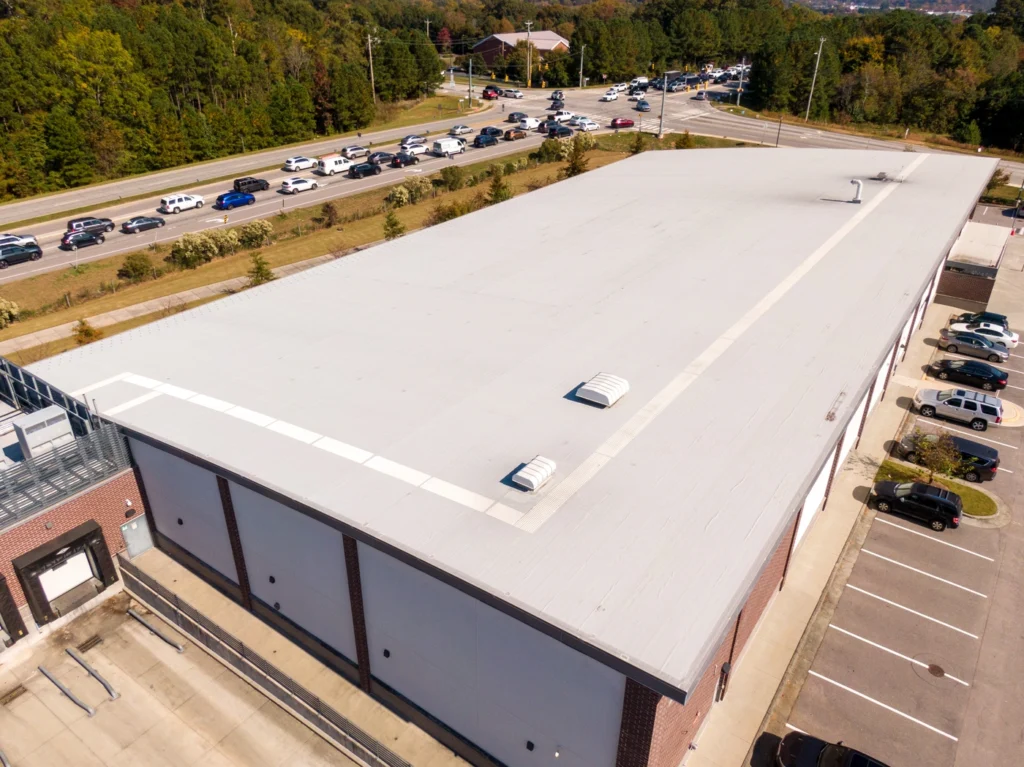
The cost of TPO material is one of the significant factors influencing the overall expense. TPO membranes typically come in different thicknesses, usually ranging from 45 mils to 80 mils. The thicker the membrane, the higher the cost.
- 45 mils – Generally, the least expensive option but may require more frequent maintenance.
- 60 mils – Offers a balance between cost and durability.
- 80 mils – Most durable, suitable for areas with extreme weather conditions, but it comes at a premium price.
2. Installation Costs
Installation costs can vary widely based on factors such as labor rates in your area, roof accessibility, and the complexity of the installation. The methods of installing TPO roofs, such as using fasteners, adhesive, or ballast, can also impact costs. Commercial roofs often require specialized skills and equipment, and labor costs can be substantial.
- Labor – Skilled laborers and roofers typically charge between $4 to $8 per square foot for TPO installation.
- Accessibility – Roofs that are difficult to access may incur additional costs due to the need for special equipment or safety measures.
- Complexity – Roofs with multiple penetrations, slopes, or unique shapes will generally be more expensive to install.
3. Roof Size and Layout
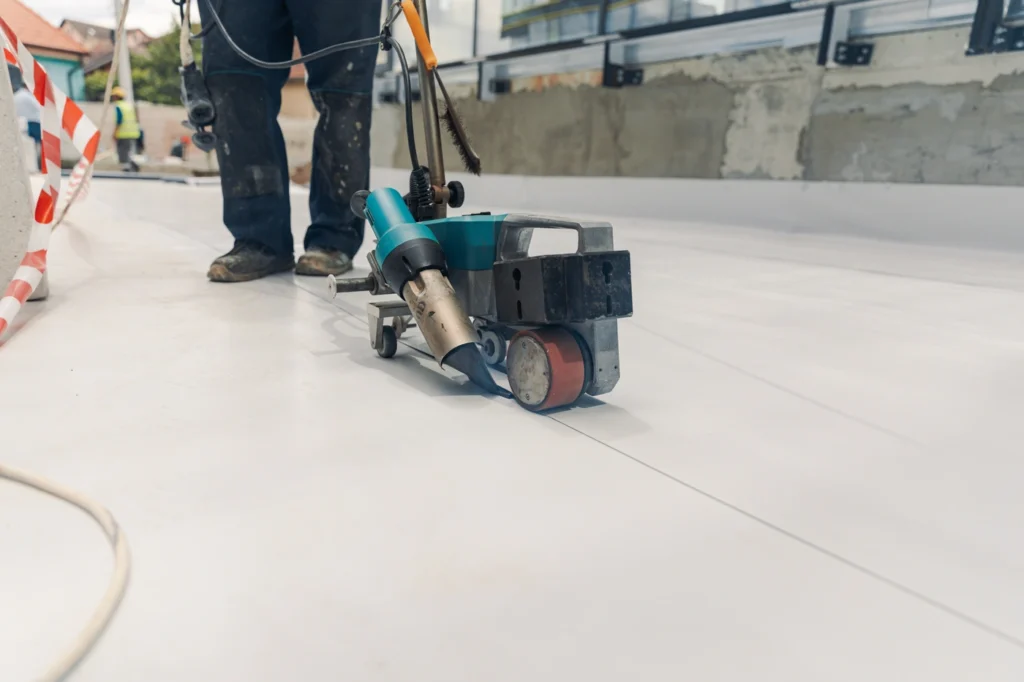
The size and layout of your roof significantly impact the total cost. Larger roofs benefit from economies of scale, but the layout and any architectural features can add to the complexity and cost of installation.
- Flat vs. Sloped Roofs – Flat roofs are typically easier and cheaper to install than sloped roofs.
- Obstructions – Roofs with numerous HVAC units, vents, or skylights will require more labor and materials, increasing the overall cost.
4. Preparation and Removal
Before installing TPO roofing, the existing roof may need to be prepared or removed, which adds to the cost. It is important to hire experienced roofing contractors for these tasks to ensure quality and reliability. This includes:
- Tear-off Costs – Removing old roofing materials can cost between $1 to $2 per square foot.
- Decking Repairs – Any damage to the roof decking must be repaired before installation, which can add to the cost.
- Cleaning and Preparation – Ensuring the roof surface is clean and smooth is crucial for effective installation.
5. Additional Components
Several additional components and accessories can influence the overall cost of your TPO roofing project:
- Insulation – Adding or upgrading insulation can improve energy efficiency but will increase upfront costs.
- Flashing and Edging – Proper flashing and edging are necessary to prevent leaks and water damage.
- Adhesives and Fasteners – The type and amount of adhesives and fasteners required can also affect costs.
Estimated Costs of TPO Roofing
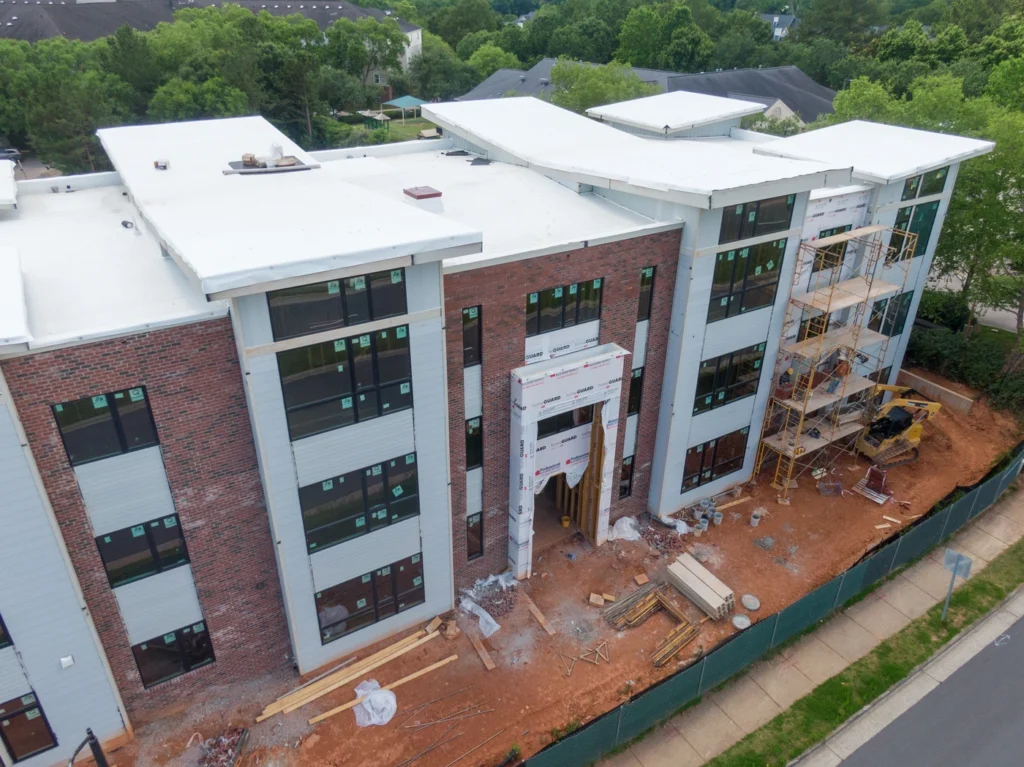
We’ve broken down the estimated costs of to install TPO roofing.
Material Costs
- 45 mils TPO Membrane – $1.50 to $2.50 per square foot
- 60 mils TPO Membrane – $2.00 to $3.00 per square foot
- 80 mils TPO Membrane – $2.50 to $3.50 per square foot
Installation Costs
- Labor – $4.00 to $8.00 per square foot
- Tear-off and Disposal – $1.00 to $2.00 per square foot
- Decking Repairs – $0.50 to $2.00 per square foot
Total Cost Estimate
For a 10,000 square-foot commercial roof:
- Low-End Estimate – $60,000 ($6.00 per square foot)
- High-End Estimate – $120,000 ($12.00 per square foot)
These estimates can vary based on geographic location, specific project requirements, and contractor rates.
TPO Roofing Cost Calculator

To get an accurate estimate of the cost of TPO roofing for your building, you can use a TPO roofing cost calculator. These calculators take into account various factors such as roof size, material quality, installation method, and location to provide a detailed estimate of the total cost.
Here’s a rough estimate of the costs involved in installing a TPO roof:
- Material Cost: $4 to $10 per square foot
- Labor Cost: $2 to $5 per square foot
- Installation Cost: $1 to $3 per square foot
- Total Cost: $7 to $18 per square foot
Keep in mind that these are rough estimates, and the actual cost of TPO roofing can vary depending on various factors. Using a TPO roofing cost calculator can help you get a more precise estimate tailored to your specific project requirements.
Benefits of TPO Roofing
TPO has a variety of benefits for you and your building. The TPO roofing system is known for its durability and energy efficiency, making it a cost-effective choice for many.
Cost-Effective: TPO roofing offers a balance between affordability and performance. While it might not be the cheapest option available, its longevity and energy-saving benefits provide a good return on investment.
- Energy Efficiency: The reflective surface of TPO roofs helps reduce cooling costs by reflecting sunlight and preventing heat absorption. This makes it particularly beneficial in warmer climates where air conditioning costs can be significant.
- Durability: TPO membranes are highly resistant to tears, punctures, and impact damage. They also resist mold and algae growth, contributing to a longer lifespan with minimal maintenance.
- Ease of Installation: TPO roofing is relatively easy to install compared to other roofing materials. The heat-welded seams create a strong bond, reducing the risk of leaks and water damage.
- Environmentally Friendly: TPO is a recyclable material, making it an environmentally friendly choice. Its energy efficiency also contributes to a smaller carbon footprint for your building.
Potential Drawbacks of TPO Roofing

There are certainly some downsides to TPO roofing, as well.
- Quality Variance: Not all TPO membranes are created equal. Some manufacturers produce higher quality products than others, and it can be challenging to differentiate without proper research.
- Installation Sensitivity: While TPO is generally easy to install, the heat-welding process requires skill and precision. Poor installation can lead to seam failures and leaks, so it’s crucial to hire experienced contractors.
- Limited Color Options: TPO roofing is typically available in white, light gray, and tan. While these colors are effective for energy efficiency, they may not suit all aesthetic preferences.
- Potential for Shrinkage: Over time, TPO membranes can shrink, leading to potential issues with seams and flashing. Regular inspections and maintenance can help mitigate this risk.
HOW TO REDUCE TPO ROOF COSTS
While TPO roofing can be a cost-effective option, there are ways to reduce the costs even further. Here are some tips:
Choosing the Right Material and Installation Method
Choosing the right material and installation method can significantly impact the cost of TPO roofing. Here are some tips:
- Select a Thinner TPO Membrane: Opt for a 45 mil or 60 mil TPO membrane for smaller roofs or roofs with simple designs. Thinner membranes are generally less expensive and can still provide adequate protection.
- Mechanically Attached Installation: For larger roofs or roofs with complex designs, consider a mechanically attached installation method. This method can be more cost-effective and easier to install.
- Ballasted Installation: For roofs with a high wind uplift rating, a ballasted installation method can be a cost-effective choice. This method uses ballast (such as gravel or pavers) to hold the membrane in place, reducing the need for adhesives or fasteners.
Considering Energy Efficiency and Long-term Savings

While TPO roofing may seem like a more expensive option upfront, it can provide long-term savings through energy efficiency. Here are some tips:
- Choose a Reflective Membrane: Select a white or light-colored TPO membrane to reflect heat and reduce energy costs. This can be particularly beneficial in warmer climates where cooling costs are high.
- High R-value TPO Roof: Consider installing a TPO roof with a high R-value (thermal resistance) to reduce heat transfer and energy costs. A higher R-value means better insulation and greater energy savings.
- Energy Star Rating: Look for TPO roofing materials with a high Energy Star rating. These materials meet strict energy efficiency guidelines and can qualify for rebates and incentives, further reducing your overall costs.
Negotiating with Contractors and Suppliers
Negotiating with contractors and suppliers can also help reduce the cost of TPO roofing. Here are some tips:
- Get Multiple Quotes: Obtain quotes from different contractors and suppliers to compare prices. This can help you find the best deal and ensure you’re getting a fair price.
- Ask About Discounts: Inquire about any discounts or promotions that may be available. Contractors and suppliers often offer seasonal discounts or bulk purchase deals.
- Bulk Purchases: Consider purchasing materials in bulk or during off-peak seasons to reduce costs. Bulk purchases can often come with significant discounts.
- Negotiate Additional Services: When negotiating with contractors, see if you can include additional services such as maintenance or repairs in the initial contract. This can provide added value and reduce future costs.
By following these tips, you can effectively reduce the costs of installing TPO roofing while still ensuring a high-quality and durable roofing system for your building.
TPO Roofing Systems You Can Count On
TPO roofing presents a compelling option for commercial property owners seeking a durable, energy-efficient, and cost-effective roofing solution. By understanding the various factors that influence TPO roofing costs, you can make an informed decision that aligns with your budget and building needs.
Ready to explore TPO roofing for your commercial property? Contact our team of experts at Palladium Roofing today for a free consultation and detailed cost estimate. We’re here to help you choose the best roofing solution for your business.


